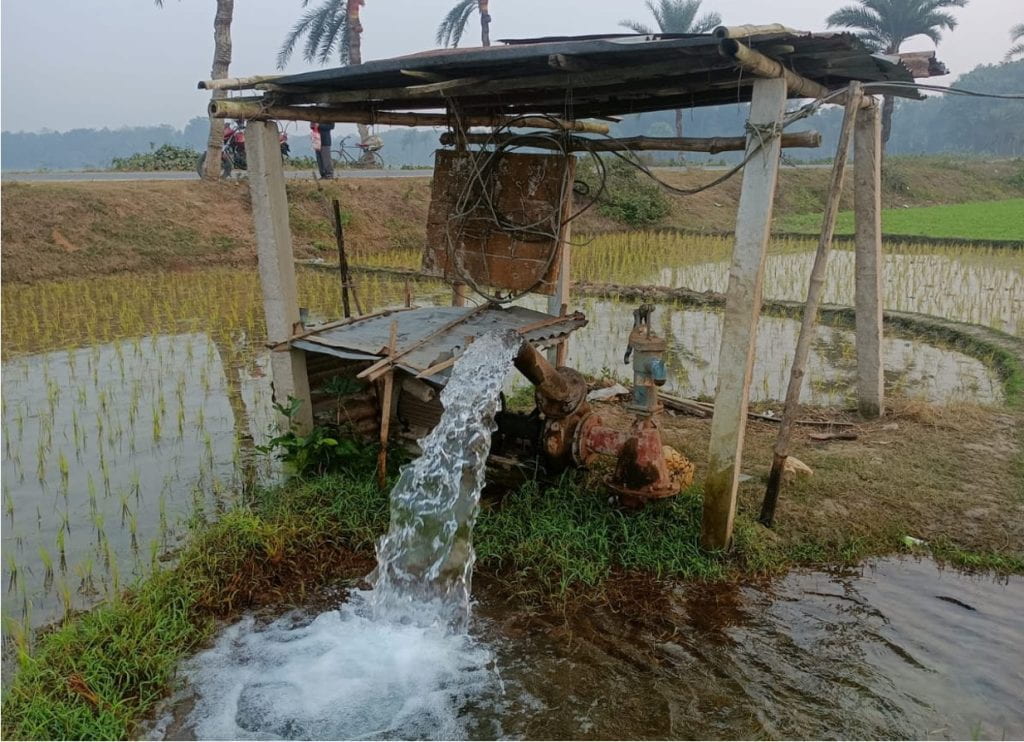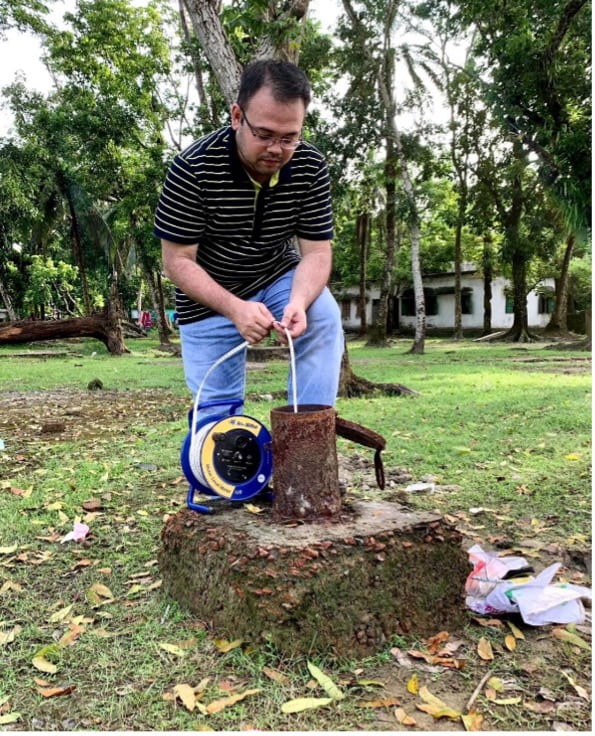The Global Water Crisis is a Local Problem
By Mohammad Shamsudduha, on 11 July 2024

We often hear that the world is facing an imminent water crisis as demand for freshwater outstrips supply and water quality is degrading globally. This is true for many parts of the world. However, is it accurate to label this a “global water crisis”? The term conjures images of a unified, worldwide struggle against dwindling freshwater resources. This perspective often obscures the true nature of the crisis: a series of highly localised problems that vary significantly from one region to another. Global-level policies, though well-intentioned, frequently fail to address the specific needs and challenges faced by local communities. By examining issues such as groundwater depletion, water quality challenge (e.g., salinity, arsenic, faecal contamination), water poverty, and poor governance, we can better understand why the global water crisis is, in reality, a collection of local problems requiring tailored solutions.
Groundwater depletion in India
According to a World Bank report, India is the largest user of groundwater, extracting over 230 km3 annually, which accounts for about 25% of the global total. Groundwater serves as the lifeline for agriculture, drinking water, and industry across India. Over-abstraction of groundwater, particularly in states like Punjab, Haryana, and Uttar Pradesh, has led to severe depletion of aquifers. This overuse is driven by policies that encourage water-intensive crops and subsidise electricity for pumping water, without considering the long-term sustainability of water resources. Despite global efforts to promote sustainable water use, the issue persists due to the local agricultural practices (e.g., water-intensive rice crop cultivation) and policy incentives that need to be reformed.
Water salinity in coastal Bangladesh
In coastal Bangladesh, water salinity has become a major concern. New research led by a PhD student at RDR shows that reduction in river discharge, rising sea levels, and frequent cyclones, exacerbated by climate change, have increased the salinity of both groundwater and surface water sources. This has made it difficult for local populations to access fresh drinking water and has adversely affected health and agricultural production. Global climate policies may address the broader issue of climate change, but they do not provide immediate solutions to the salinity problems faced by coastal communities in Bangladesh. Localised strategies, such as building freshwater reservoirs, rainwater harvest, and adopting salt-tolerant crops, are essential to address these specific challenges. A study from the World Bank highlights that over 25 million people in Bangladesh are currently exposed to saline groundwater.
Arsenic contamination in Bangladesh and India
Arsenic contamination of groundwater has been a severe issue in parts of Bangladesh and India, particularly in the Ganges-Brahmaputra-Meghna Delta since early 1990s. Millions of people are exposed to arsenic levels far above safe limits, leading to serious health problems. Recent reports show that around 20 million people in Bangladesh and 13 million in India are exposed to very high arsenic contamination in drinking water. While international guidelines and global health policies raise awareness about the dangers of arsenic, the solution requires localised intervention. This includes identifying contaminated wells, providing alternative water sources, and educating communities about the risks and mitigation strategies. Global policies cannot replace the need for targeted, on-the-ground action to manage this public health crisis.
Water poverty in Sub-Saharan Africa
Water poverty remains a significant challenge across various regions globally, impacting millions of people daily. In many parts of Sub-Saharan Africa, access to clean water is a daily struggle. Water poverty, defined by lack of access to adequate, safe, and affordable water for a healthy life, affects millions. Global initiatives often focus on large-scale infrastructure projects, but these can overlook the specific needs of remote or impoverished communities. Local solutions, such as community-managed water supply systems, rainwater harvesting, and mobile water treatment units, can be more effective in addressing the unique challenges faced by these populations. According to the United Nations, over 400 million people in Sub-Saharan Africa lack access to basic drinking water services.
Sewage disposal and water pollution in the UK
Here in the UK, ongoing issues with sewage disposal by water companies highlight significant governance failures in managing water resources. Water companies have been criticised for discharging untreated sewage into rivers and coastal waters, leading to severe water pollution. This practice has contaminated waterways, affecting ecosystems and public health. Despite regulatory frameworks intended to protect water quality, enforcement has been lax, and infrastructure investments have lagged. According to the Environmental Agency, in 2023, England’s rivers and seas endured over 3.6 million hours of untreated sewage discharges, a 54% increase from the 1.75 million hours in 2022, with the total number of spills reaching 464,000. This severe water pollution impacts ecosystems and public health, underscoring the urgent need for stronger local governance and enforcement to address these issues effectively. Watershed Investigations has recently published a UK-wide map of water pollution that contains 120 datasets, ranging from river health, bathing water health, to historic landfill sites, sewage dumping, intensive farming, heavy industry and more.
Global awareness and local realities
While the global narrative of a water crisis is useful in creating public and policy awareness, it often fails to solve specific local problems on the ground. Unlike the global climate crisis, which is primarily driven by carbon emissions affecting the entire planet, water issues are highly localised and influenced by regional natural and anthropogenic factors.
Global policies tend to generalise the water crisis, leading to solutions that do not fit local contexts. For instance, the UN’s global water development report highlights broad issues, but without localised strategies, these insights do not translate into actionable solutions on the ground. Global campaigns such as the Sustainable Development Goals (SGD) may raise awareness, produce lots of reports, and mobilise resources but fall short in addressing specific local challenges such as the infrastructural deficits in Sub-Saharan Africa or the unique ecological impacts on Bangladesh’s coastal regions due to water and soil salinity.
Addressing the global water crisis through localised strategies is essential for real change. For instance, India’s severe groundwater depletion due to over-extraction for agriculture necessitates local policy reforms and sustainable water management practices. Coastal Bangladesh faces increasing water salinity from rising sea levels and cyclones, which can be mitigated through localised solutions like freshwater reservoirs, rainwater harvesting and salt-tolerant crops. In Sub-Saharan Africa, sustainable groundwater development, including managed aquifer recharge, solar-powered boreholes, and community-based management, effectively addresses water scarcity. The UK’s severe sewage disposal issues underscore the importance of stringent governance, regulation, and infrastructure investments. These examples illustrate that while global awareness is important, tailored, region-specific interventions (“global water crisis but local solutions”) are critical for effectively addressing diverse water challenges worldwide.
Dr Mohammad Shamsudduha | Department of Risk and Disaster Reduction
Dr. Mohammad Shamsudduha (Shams) is an Associate Professor at UCL RDR, specialising in water crises and risks to human health, irrigated agriculture, and climate adaptation. His research focuses on sustainable water management, water risk, and resilience strategies, with significant contributions to understanding groundwater quality and quantity crises around the world. Dr. Shams has been promoted to Professor of Water Crisis and Risk Reduction, effective from October 2024.
The views expressed in this blog are those of the author(s).
Read more IRDR Blogs
Follow IRDR on Twitter @UCLRDR
 Close
Close



